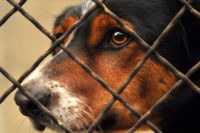2017 bestiality map | Learn More About Animal Sexual Assault
Prohibit Animal Sexual Abuse in Kentucky!
What is animal sexual abuse?
It is the sexual molestation of an animal by a human. Animal sexual abuse, like rape, is the eroticization of violence, control and exploitation.
Why does it matter?
Animal sexual abuse is the single strongest predictor of increased risk for committing child sexual abuse.
In a study of over 44,000 adult male sex offenders, researchers concluded that animal sexual abuse is the number one risk factor and the strongest predictor of increased risk for sexual abuse of a child.
Some studies have found high rates of sexual assault of animals in the backgrounds of serial sexual homicide perpetrators. This is one reason why bestiality and other forms of animal cruelty are now tracked by the FBI as a Group A offense in the National Incident Based Reporting System, in the same category as rape and murder.
Establishing animal sexual abuse as a separate crime allows law enforcement to identify potentially dangerous sexual predators in their community.
Isn’t it already illegal?
Kentucky’s animal cruelty law only applies in cases where there is provable physical injury to the animal. Many acts of animal sexual abuse are filmed and discovered well after the incident occurs, so the requisite animal or medical evidence to substantiate physical injury cannot be recovered.
Finally, animals, like women and children, are trafficked, sold, and traded for sex and frequently used in the pornography industry. Trafficking animals for sex is not currently prohibited in Kentucky.
How common is it?
The Internet has allowed the sexual abuse of animals to flourish. BeastForum.com, an Internet forum for people who have sex with animals, claims more than one million users – a majority from the U.S. The Internet makes how-to guides, personal ads, and information on laws and diseases regarding sex with animals readily available. Even Craigslist.org publishes ads for people seeking or offering sexual encounters with animals. Dogs and horses are the most frequently mentioned targets.
The following elements are needed to prohibit the sexual abuse of animals in Kentucky:
• Prohibit engaging in sexual contact with animals with any part of the body or an object;
• Prohibit promoting, trafficking, advertising, or soliciting animals for sex;
• Prohibit engaging in sexual contact with animals in the presence of a minor or coercing others;
• Increase the penalty from misdemeanor to a felony regardless of injury;
• Require the court to order the convicted person to refrain from contact with animals and surrender any animals in their possession;
• Require psychological assessment;
• Exempt veterinary procedures and examinations, accepted animal husbandry, routine animal care, artificial insemination, and conformation judging.
Compiled Studies of Human Sex Offenders and Animal Sexual Abusers
(1986-2016)
Bestiality is the single largest risk factor and strongest predictor of increased risk for committing child sexual abuse.
- A study of 44,202 adult males evaluated for sexual misconduct found that bestiality is the single largest risk factor and strongest predictor of increased risk for committing child sexual abuse. (Abel 2008).
- Individuals convicted of bestiality are the most likely to “cross-over” into other forms of criminal behavior – moving from non-contact offenses like trespassing to contact offenses like rape (Abel 1999).
- Out of 20 men adjudicated for animal sexual abuse in Fairfax County, VA, 5 offenders committed hands-on sexual offenses with children, 6 possessed child pornography, 3 solicited sex from a minor online, and 2 committed sexual battery of an adult (J. Hoffman 2016).
- Forty percent (40%) of the perpetrators of sexually motivated homicides reported they had sexually abused animals (Ressler, et al. 1986).
- In a study of 137 rapists and 132 child sexual abusers, Simons, Wurtele, and Durham (2008) found child molesters were significantly more likely to report having engaged in bestiality (38%) than rapists (11%).
The sexual abuse of animals is often linked to the sexual abuse of women and children.
- Domestic violence can involve the use of animals for degradation and sexual exploitation of the battered partner. (Kowal, 1998).
- Child sexual abusers may sexually abuse animals to enhance, expand or extend the abuse of the genuinely powerless and unsuspecting victim (Adams, 1994).
- In a test group of women who had past relationships with battering and non-battering partners, 41% of the battering partners wanted them to sexually interact with animals – compared to 5% of non-battering partners (L.E. Walker 2009).
- Case studies of sexual abuse of children often include reports of forcing children to interact sexually with animals (Ascione, 1993).
Learn More:
http://www.humanesociety.org/search/search-results.html?q=animal+sexual
http://aldf.org/resources/laws-cases/the-crime-of-bestialityzoophilia-sexual-assault-of-an-animal/
http://www.mjennyedwards.com/
https://en.wikipedia.org/wiki/Zoophilia
Citations:
Abel, G. G. (2008, May 16). What can 44,000 men and 12,000 boys with sexual behavior problems teach us about preventing sexual abuse? Paper presented at the California Coalition on Sexual Offending 11th Annual Training Conference, Emerging Perspectives on Sexual Abuse Management, San Francisco, CA.
Abel, G. G. (1999). Assessing and treating sex offenders. Paper presented at the Specialized Services Conference Presentation on Assessing and Treating Sex Offenders: Chicago, IL, August.
Alys, L., Wilson, J. C., Clark, J., & Toma, P. (2009). Developmental animal cruelty and its correlates in sexual homicide offenders and sex offenders. In A. Linzey (ed.), The link between animal abuse and human violence (pp. 145-162). Eastbourne: Sussex Academic Press.
Ascione, F. R. (1993). Children who are cruel to animals: A review of research and implications for developmental psychopathology. Anthrozoos, 6(4), 226–246.
Alvarez, William A. and Freinhar, Jack P. (1991) “A Prevalence Study of Bestiality (Zoophilia) in Psychiatric In-Patients, Medical In-Patients, and Psychiatric Staff,” International Journal of Psychosomatics 38, no. 1-4 1991: 45.
Detective Jeremy Hoffman 2016. Court certified expert in bestiality; Child Exploitation Unit, Fairfax County, Virginia Police Department. Presented at the Association of Prosecuting Attorneys conference: Austin, TX 2016.
Duffield, G., Hassiotis, A., & Vizard, E. (1998). Zoophilia in young sexual abusers. The Journal of Forensic Psychiatry, 9 (2)
Hensley, C., Tallichet, S. E., & Dutkiewicz, E. L. (2010). Childhood bestiality: A potential precursor to adult interpersonal violence. Journal of Interpersonal Violence.
Kowal, L. W. (1998). Recognizing animal abuse: What veterinarians can learn from the field of child abuse and neglect. In American Humane Association (Ed.), Recognizing and reporting animal abuse: A veterinarian’s guide (pp. 40–49). Denver, CO: American Humane Association.
Ressler, R. K., Burgess, A. W., Hartman, C. R., Douglas, J. E., & McCormack, A. (1986). Murderers who rape and mutilate. Journal of Interpersonal Violence, 1.
Simons, D. A., Wurtele, S. K., & Durham, R. L. (2008). Developmental experiences of child sexual abusers and rapists. Child Abuse & Neglect, 32:549–560.
Walker, Lenore (2009). The Battered Woman Syndrome. (New York: Springer 2009)



